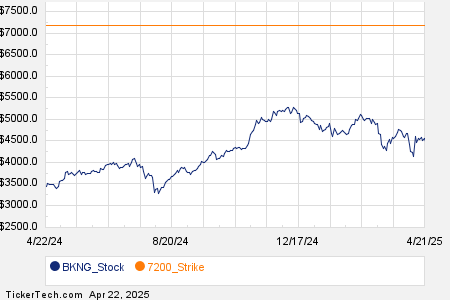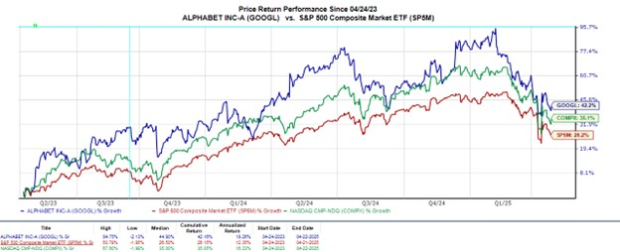Trump and Powell Clash: A New Geopolitical Risk for Wall Street
This week brings a fresh geopolitical risk for Wall Street that diverges from tariffs, the trade war, and AI. Instead, a confrontation is brewing between U.S. President Donald Trump and Federal Reserve Chairman Jerome Powell.
Yes, you read correctly. The president has targeted the head of the nation’s central bank. The latest threat to the market stems from a political showdown reminiscent of old-style boxing, moderated via social media.
Welcome to Round One of the Trump vs. Powell saga. So far, market sentiment isn’t favorable.
Following Trump’s social media remarks labeling Powell a “major loser,” both the S&P 500 and Nasdaq fell more than 3% in a risk-off panic.
This situation reflects more than just a typical economic disturbance; it signifies an institutional crisis. At its core lies a fundamental and unsettling question:
Can the Fed still be trusted to maintain its independence?
Escalation of Tensions: Trump vs. Powell
The crux of this conflict centers on Trump’s desire for Powell to cut interest rates—urgently.
With trade agreements stalling and consumer prices remaining stubborn, Trump is keen to invigorate the economy as the 2026 election approaches. Lower rates typically mean increased growth and satisfied voters.
However, Powell remains reluctant. In public comments last week, he expressed that the Fed is in no rush to lower rates. The reasoning? Inflation risks linked to Trump’s own tariffs; a trade war usually leads to price increases, not decreases. Cutting rates amid rising prices presents a precarious gamble, and the Fed is acutely aware of this.
Trump’s reaction has involved a full-throttle public denunciation of Powell. He has labeled Powell “too late,” “a major loser,” and “a disaster.” Furthermore, White House economic advisor Kevin Hassett reported over the weekend that Trump is considering the possibility of firing Powell altogether.
The market turmoil persists as a result.
The Vital Importance of Federal Reserve Independence
The Federal Reserve’s independence is crucial for a reason—it underpins U.S. economic credibility.
We don’t want politicians arbitrarily printing money to sway election outcomes. The goal is for the Fed to make well-reasoned, nonpartisan decisions regarding interest rates and money supply.
This ongoing dispute is troubling for Wall Street. If Trump were to dismiss Powell or pressure him into cutting rates for political leverage, it would undermine a fundamental principle and introduce instability into the system. If the markets cannot trust the Fed, who can they rely on?
This is not a hypothetical concern; we have witnessed similar scenarios play out in the past—often with troubling consequences.
Historical Echoes: Nixon’s Clash with the Fed
The most relevant example here is Richard Nixon’s push against then-Fed Chair Arthur Burns in the early 1970s.
At that time, the economy was fragile, and inflation was already on the rise. However, looking ahead to his 1972 reelection bid, Nixon was relentless. He pressured Burns into lowering interest rates, and eventually, Burns acquiesced.
To mask the inevitable inflation from these cuts, Nixon imposed price controls—freezing wages, rents, and consumer prices across the board. This tactic had a temporary effect. Inflation decreased, the economy surged, and Nixon won reelection by a landslide.
Yet, it was ultimately a façade.
Inflation was building beneath the surface; it was merely suppressed. When the Fed halted rate cuts and Nixon lifted the price controls, the situation spiraled out of control.
The aftermath was a decade-long economic crisis: rampant inflation, stagnant growth, soaring unemployment, and plummeting stock prices. The 1970s were marked by suffering, all stemming from a president’s intervention in the Fed’s timing on rate cuts.
Today, investors find themselves haunted by these historical specters.

Could Trump be poised to repeat Nixon’s error?
Only if rhetoric transitions into action.
If Trump follows through on firing Powell—or appointing a loyalist to quickly implement aggressive rate cuts—there is a real risk of reliving a version of the 1970s. This could mean a brief economic boost followed by extended stagflation struggles, offering a short-lived surge in growth followed by years of pain.
This looming possibility explains the market’s current anxiety. The risk is tangible.
Evaluating the Threat: Political Theater or Real Concern?
However, there’s reason to believe that Trump isn’t attempting to dismantle the Fed’s independence. Instead, we interpret his actions as an effort to ensure that Powell adheres to a course that the Fed was already poised to follow: implementing interest rate cuts this summer.
Wall Street anticipates four rate cuts in 2025, with the first likely coming in June. This outlook remained steady even before the president’s public comments.
The Fed recognizes that increased tariffs are dampening demand, core inflation is subsiding, and financial conditions are tightening.
Market Opportunities Amid Federal Reserve Rate Cut Speculation
Recently, the data has been signaling potential rate cuts from the Federal Reserve, despite the ongoing political noise. Former President Trump’s comments, although dramatic, are unlikely to shift the Fed’s decision-making process. This situation can be viewed as typical of Trump’s style—tweet now, claim credit later.
Potential Buying Opportunities from Fed Decisions
If Trump refrains from firing Fed Chair Powell and the Federal Reserve does proceed with rate cuts this summer—which we consider quite likely—then the current market unease could transform into a significant buying opportunity.
The present selloff, largely driven by fears of political interference that may not materialize, could yield the groundwork for a substantial market rally once the Federal Reserve begins to ease its monetary policies.
Lower interest rates typically lead to higher valuations and increased liquidity. This environment can particularly benefit growth stocks, especially high-beta tech companies, which may experience significant gains as investor confidence returns.
Confirmation that the cycle of rate cuts is beginning, coupled with the assurance of the Fed’s independence, could catalyze a remarkable market recovery.
Now is not the time to succumb to panic.
While real risks exist—such as Trump’s potential attempts to exert influence over the Fed, which could destabilize the markets—this situation appears to be largely theatrical, functioning more as a pressure tactic than a genuine power maneuver.
We expect that reason will prevail. Powell is likely to remain in his position, the Fed is expected to cut rates, and the market should rebound as a result.
Thus, patience and vigilance are essential. Look for opportunities amidst the turmoil. In the words of Warren Buffett, “Be greedy when others are fearful.”
Given the prevalent fear in the market, considerable opportunities may be on the horizon.
Particularly, investments in AI 2.0 technologies could prove to be promising. These advancements include embodied intelligence capable of seeing, hearing, walking, talking, lifting, carrying, organizing, fixing, and learning.
Indeed, the burgeoning interest in humanoid robots among leading tech companies indicates that significant investment potential lies ahead in this domain. We have identified a strategic opportunity to engage in this promising phase of the AI boom.
Discover more about our top AI 2.0 investment recommendation.
At the time of publication, Luke Lango had no direct or indirect positions in the securities mentioned in this article.
If you have questions or comments regarding this issue, please reach out to us at [email protected].



